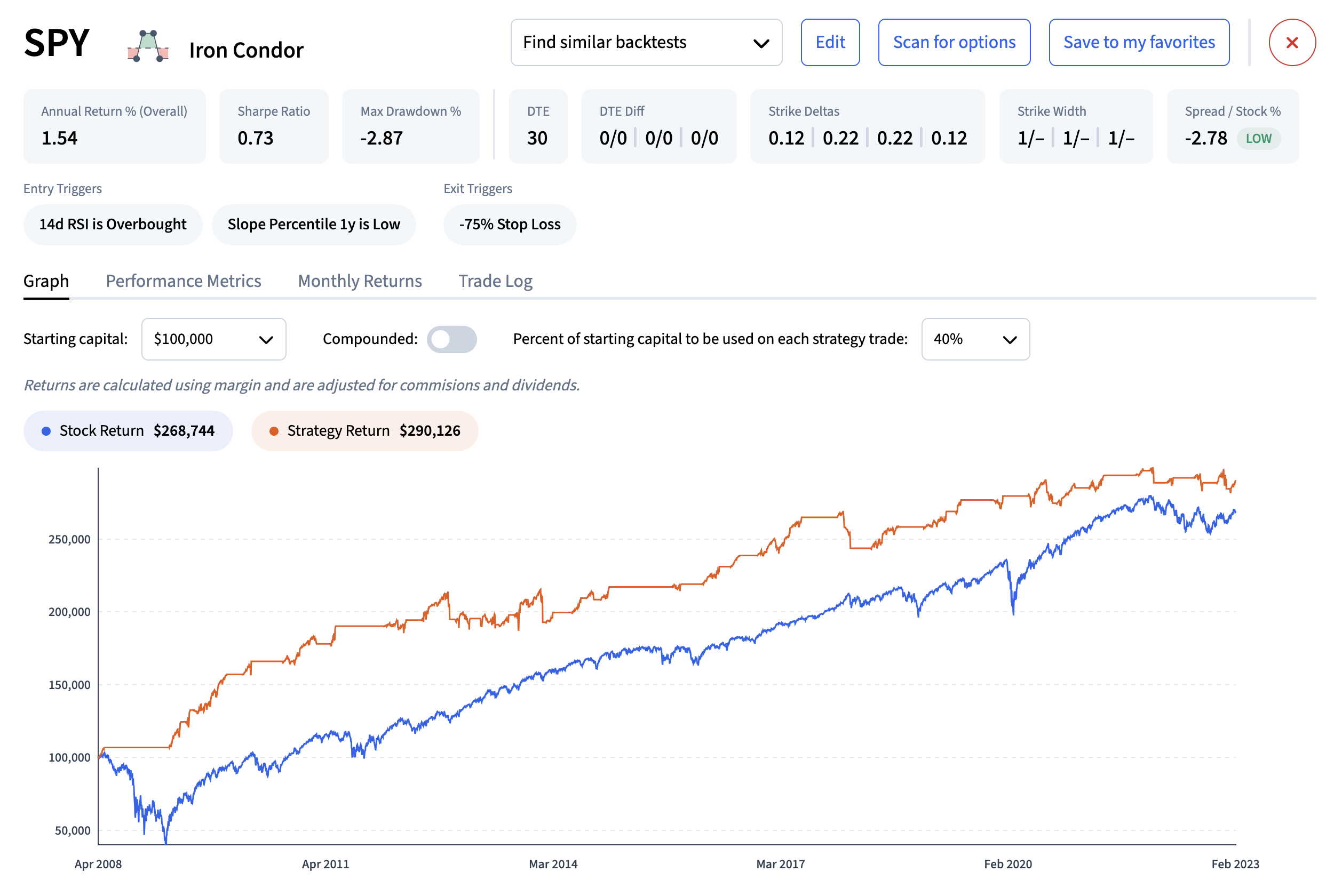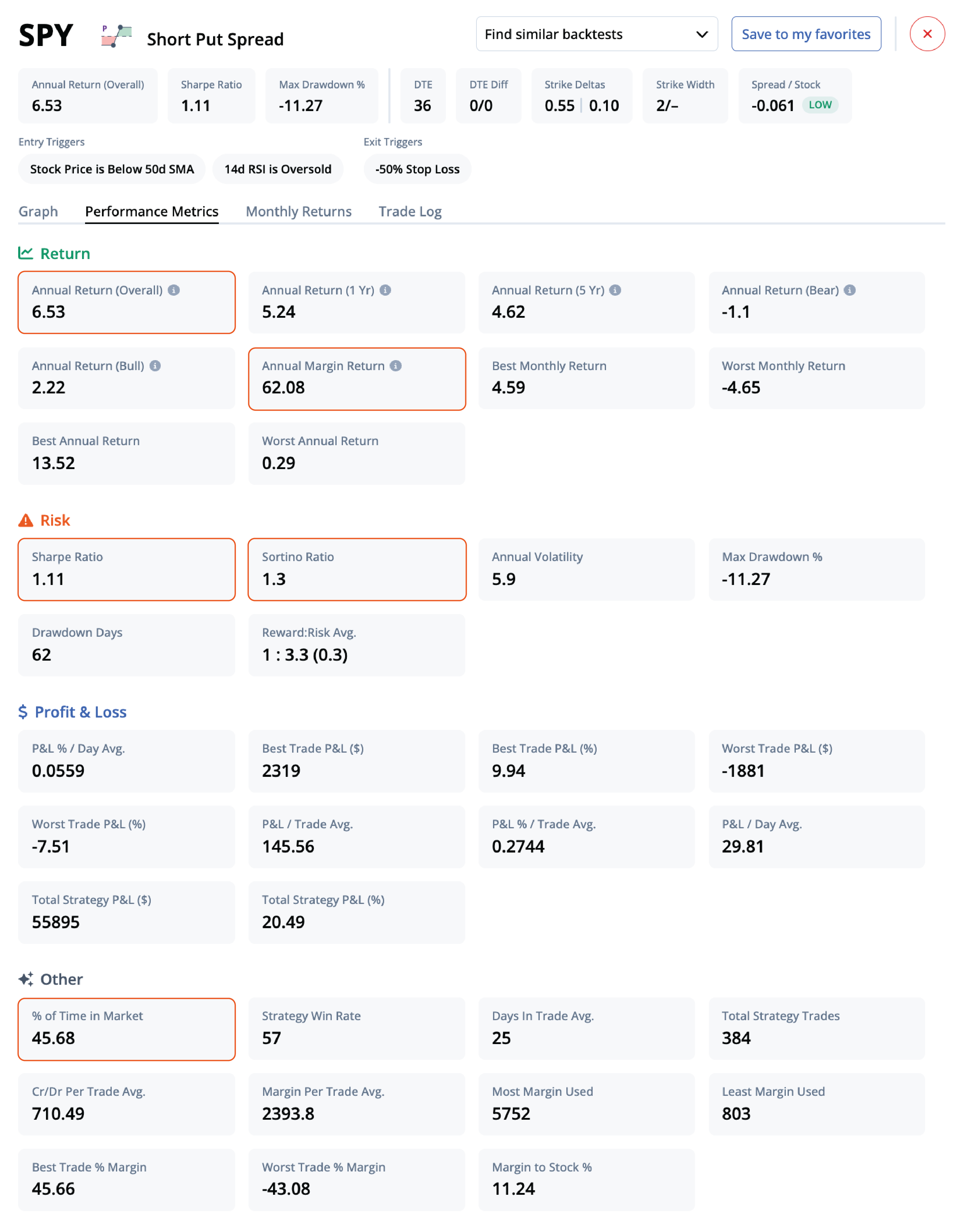Backtesting
Monday, February 25th 2019
Delta Neutral Backtesting, an Example Calculation
An example of using the delta neutral options trading technique in the ORATS backtester. An example calculation from downloading the trades and return statistics from the backtest report is made.
Summary
This document explains the delta neutral options trading technique and how to backtest it using ORATS. It provides an example calculation of a delta neutral trading strategy and shows how to calculate the profit from trading options and stocks using the ORATS backtester. The document also includes a video tutorial on the process.
The options trading technique called 'delta neutral' is flattening out a position's delta at a time interval or a delta level.
ORATS offers the ability to backtest delta neutral by selecting 'Hedge Days' parameter when setting up a backtest. For example, you can flatten deltas every 7 days or when the delta reaches 50 long or short.
For a delta neutral trading example, assume a position short 50 deltas from selling an at-the-money call. To make the deltas neutral, 50 shares of stock are bought to flatten the deltas. The next day, if the stock goes up and the call is now an in-the-money 80 delta, 30 more shares are bought to again flatten the deltas. On the third day, if the stock were to go back down to its original level, then the 30 shares would have to be sold to be again delta neutral.
The profit from that position would be the profit from the options plus the profit from trading the stock. You can see that the profit from the stock is a loss, since the 30 shares bought on day two we sold at a lower price on day three. The 50 shares bought on day one had no profit since the stock price at day three was the same as day one.
To see how we calculate the profit on an actual backtest example, consider the SPY Short Call with Hedged Days = 1 below. The strategy had an annual return of 1.40% on total strategy profit of $2,171.40.

Click the Download button and view the OptionTrades file to see the detail of the $2,171.40 as the sum of the Total Profit column. Let's take a look at the profit from the second to the last trade entered 12/17/18 and exited 1/7/2019 with an options profit of $325.2, a stock profit of -$343.59 and a total profit of -$18.39.

The options profit is easy to reconcile as selling the call for $5.192 and buying it back for $1.93, a profit of 3.252 * 100 less $1 commission.
The stock profit is a more involved calculation. You need delta, stock price and dividends. The delta is found in the OptionsReturns file as part of the download. The stock price and dividends are found using the Data API history of General Core.
On 12/17/2018 the -0.5 delta call was hedged with 50 long shares at the stock price of 253.74. On day two the stock went up to 255.78 for a profit of $102 on the long 50 shares.
On 12/21/18 SPY paid a dividend of 1.435429 and at that time the position was long 28.1751 shares for a profit of (1.435429*-0.281751*-1*100)= $40.44 that is added to the normal stock profit from the stock price change on that day.

Summing the stock and dividend profits and adding commissions of .01 per share, the total profit from this trade matches the trades file of $343 off by a little rounding error.
Here is a video going through the process:
Disclaimer:
The opinions and ideas presented herein are for informational and educational purposes only and should not be construed to represent trading or investment advice tailored to your investment objectives. You should not rely solely on any content herein and we strongly encourage you to discuss any trades or investments with your broker or investment adviser, prior to execution. None of the information contained herein constitutes a recommendation that any particular security, portfolio, transaction, or investment strategy is suitable for any specific person. Option trading and investing involves risk and is not suitable for all investors.
All opinions are based upon information and systems considered reliable, but we do not warrant the completeness or accuracy, and such information should not be relied upon as such. We are under no obligation to update or correct any information herein. All statements and opinions are subject to change without notice.
Past performance is not indicative of future results. We do not, will not and cannot guarantee any specific outcome or profit. All traders and investors must be aware of the real risk of loss in following any strategy or investment discussed herein.
Owners, employees, directors, shareholders, officers, agents or representatives of ORATS may have interests or positions in securities of any company profiled herein. Specifically, such individuals or entities may buy or sell positions, and may or may not follow the information provided herein. Some or all of the positions may have been acquired prior to the publication of such information, and such positions may increase or decrease at any time. Any opinions expressed and/or information are statements of judgment as of the date of publication only.
Day trading, short term trading, options trading, and futures trading are extremely risky undertakings. They generally are not appropriate for someone with limited capital, little or no trading experience, and/ or a low tolerance for risk. Never execute a trade unless you can afford to and are prepared to lose your entire investment. In addition, certain trades may result in a loss greater than your entire investment. Always perform your own due diligence and, as appropriate, make informed decisions with the help of a licensed financial professional.
Commissions, fees and other costs associated with investing or trading may vary from broker to broker. All investors and traders are advised to speak with their stock broker or investment adviser about these costs. Be aware that certain trades that may be profitable for some may not be profitable for others, after taking into account these costs. In certain markets, investors and traders may not always be able to buy or sell a position at the price discussed, and consequently not be able to take advantage of certain trades discussed herein.
Be sure to read the OCCs Characteristics and Risks of Standardized Options to learn more about options trading.
Related Posts



